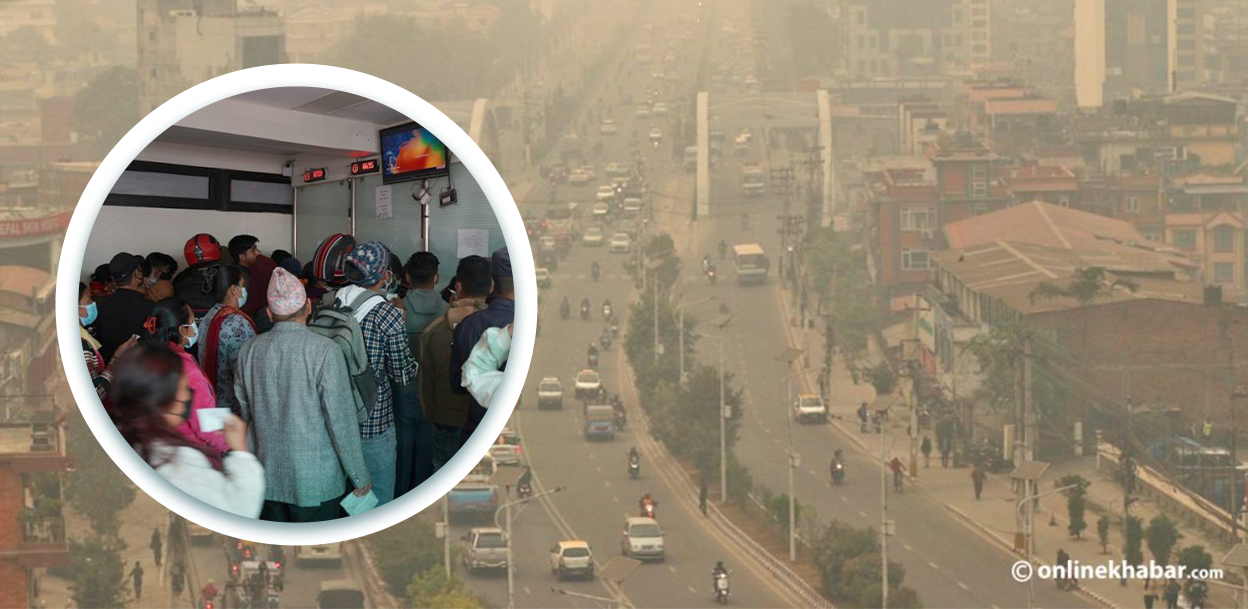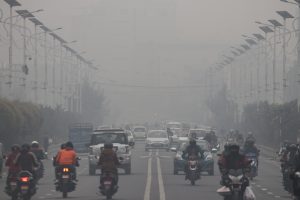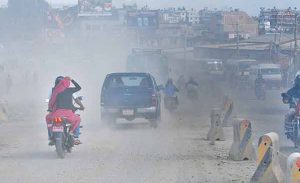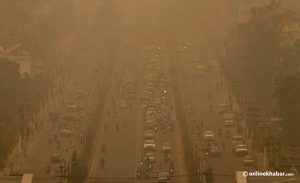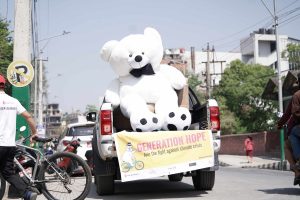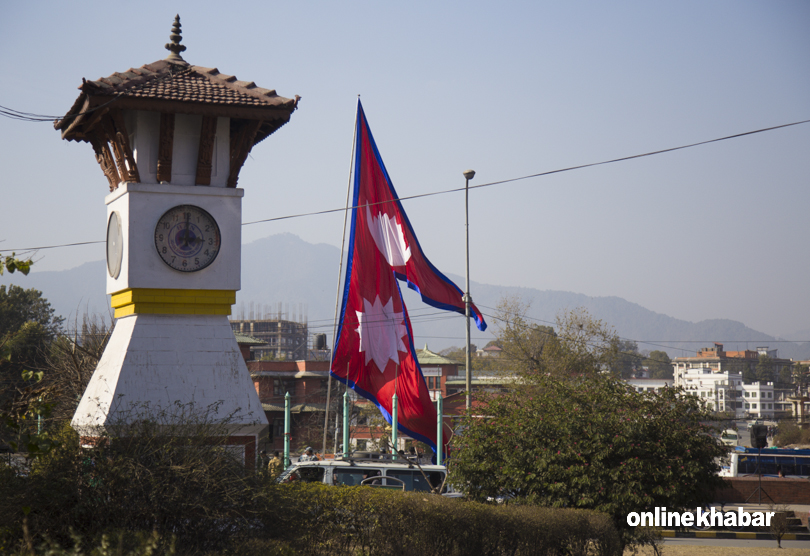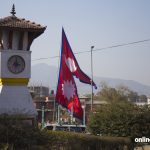
The city Kathmandu has always been a center of spirituality, history, and culture. However, beneath its beautiful exterior, Kathmandu is dealing with an environmental crisis which is air pollution, it poses a threat to not only the city’s citizens’ health but also its future. Being a resident of this city, it hurts to see the air quality worsening, and now it’s becoming a huge health hazard to its people. The increase of pollution over the last couple of years is a matter of concern and requires immediate action on the part of the government and the citizens.
For a few years, Kathmandu is often ranked as one of the most polluted cities in the world.In recent years, the problem has been worsened greatly by the rapid urbanization, rising vehicles, uncontrolled construction of buildings, and burning of garbage. Air quality index often exceeds dangerous levels and poses respiratory problems, especially to children, older people, and individuals with pre-existing health conditions. It further enhances the risk of serious health effects, such as shortness of breath, long-term diseases, lung damage, nausea, tiredness, and more.The Air Quality Index (AQI) regularly exceeds dangerous levels, making Kathmandu one of the cities with the worst air quality, according to the 2020 World Air Quality Report. A public health emergency is approaching, and the situation is dangerous.
Studies have even shown that air pollution is one of the leading causes of premature deaths in Nepal. The World Health Organization (WHO) estimates that air pollution caused about 17,000 premature deaths in the nation in 2019. Given that many of these deaths are completely preventable with appropriate intervention, this number is extremely concerning.
The health cost
The health of people living in Kathmandu is most severely impacted by this degradation of the environment. The effects of air pollution are deep and it is a silent killer. The number of cases of respiratory diseases like asthma, bronchitis, and chronic obstructive pulmonary disease (COPD) is increasing, and their impact affects the most vulnerable citizens, including children, the elderly, and people with medical histories. A number of problems, such as heart disease, lung cancer, and even early death, can result from the airborne pollutants’ capacity to enter the bloodstream and lungs. Air pollution has consequences that go beyond respiratory issues.Shortness of breath, nausea, dizziness, and exhaustion can all result from prolonged exposure to contaminated air. The combined health risks are substantial for those who already have underlying medical conditions like diabetes or hypertension. Residents of Kathmandu are suffering greatly in terms of their mental, physical, and emotional health as a result of this silent crisis.
The environmental and economic costs
The air pollution crisis has equally concerning financial effects. The financial cost that poor air quality takes on Nepal is huge. An Asian Development Bank (ADB) study estimates that Nepal’s air pollution costs the nation $1.3 billion a year, or roughly 5.7% of its GDP. These expenses are not just associated with medical care. They also include the reduced level of life that comes with living in an environment where even basic breathing can be difficult, as well as the loss of productivity brought on by illness and early death.
Nepal’s economy depends heavily on tourism, which is also at risk. One of the most popular tourist destinations is Kathmandu, a city with a rich cultural legacy and historic sites. But poor air quality has made it harder to see, which makes the city less appealing to tourists. Considering how much Nepal depends on tourism, this is especially concerning. Furthermore, the cultural monuments listed in UNESCO World Heritage Sites also are harmed by air pollution. These priceless gems, such as the Swoyambhunath Stupa and the Pashupatinath Temple, are essential to the] tourism sector as well as to being the historic symbols of Nepal. These locations lose cultural and economic significance as air pollution increases.
Air pollution has serious negative effects on the environment in addition to the economy and public health. As the local flora and fauna struggle to adapt to the increasingly polluted atmosphere, the biodiversity of the Kathmandu Valley is being destroyed. Degradation of the air quality also impacts the region’s already limited water supplies and leads to soil contamination, which further threatens food security and agriculture.
An appeal for quick action
The Kathmandu situation requires immediate action. Even though the issue is complicated and broad, there are a few crucial actions that can be taken to solve it.
Firstly, stronger industrial pollution laws and regulations need to be implemented. Dust and particulate matter in the air have increased as a result of Kathmandu’s expanding construction industry. Implementing building codes that require the use of pollution-reducing practices and technologies is a good idea. Furthermore, it is necessary to prohibit the burning of trash, which is a widespread practice in many areas of the city, and replace it with other waste management techniques. In order to control these activities and hold those who cause pollution accountable, the government must take action.
Second, there should be an effort to promote more sustainable and clean ways of transportation. Air pollution, especially from exhaust gases, has been made worse by Kathmandu’s growing automobile population. Priority should be given to public transportation systems and electric vehicles (EVs) that reduce dependence on private automobiles. The number of gas-powered vehicles on the road may be decreased by offering incentives for EVs and growing networks of electric buses and microbuses.
Similarly, increasing the amount of greenery is another essential component of improving the air quality in Kathmandu. Although the city has started the process of planting trees in some locations, more work needs to be done. Urban forests, green rooftops, and public parks are all helpful in pollution absorption, climate change reduction, and general air quality improvement. In addition to improving air quality, promoting sustainable urban planning and design will make cities more livable.
Likewise, community participation and public awareness are also crucial. There can be a big impact if people in Kathmandu are taught about the risks of air pollution, the value of reducing waste, and the advantages of living a greener lifestyle.Whether it’s cutting back on plastics, taking public transit, or just being more aware of their environmental impact, everyone can play a part.
In addition to being an environmental problem, air pollution in Kathmandu poses a threat to the city’s economy, public health, and future. It will continue to harm the environment, the economy, and public health permanently if unchecked. The public must cooperate with the government in order for it to act quickly. Now is the moment to address this crisis before the costs of delay become too high. Together, we can clean up Kathmandu’s air and ensure future generations have a healthier, brighter future.




